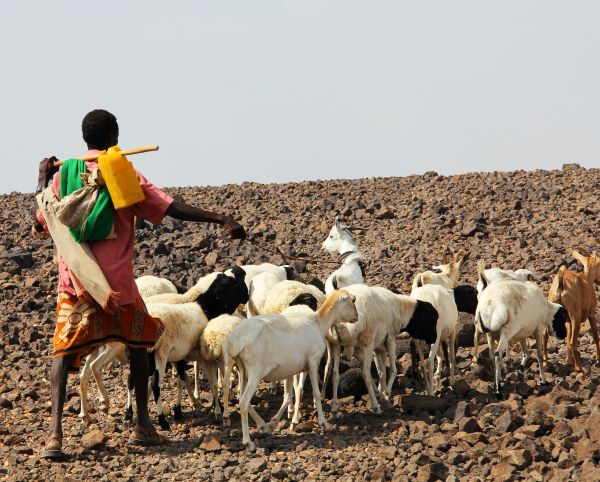Every day in the town of Baroueli in south-central Mali, Radio Soumpou crackles with the weather for the coming days.
But this is no ordinary forecast. Along with predictions for temperature, humidity and precipitation, broadcasters discuss historic rainfall patterns and the risk of the spread of a millet-wasting disease known as mildew.
The forecast, which broadcasters read from a mobile app, MaliCrop, has become a lifeline for farmers in drought-prone Mali. Two-thirds of the West African country sits in or along the margins of the Sahara Desert. As climate change threatens to make parts of Mali hotter and drier, experts say that accurate forecasts can make the difference between the success and failure of crops.
“This app saves time in obtaining information,” said Daouda Diarra, who works with WeatherForce, the company that built MaliCrop. “It helps significantly in the decision-making process for the work on the farms.”
The MaliCrop app was developed with the support of the Climate Technology Centre and Network, which is hosted by the United Nations Environment Programme (UNEP). The network helps developing countries use technology to contend with the climate crisis.
This work is becoming increasingly important. As UNEP research shows, unless humanity cuts its emissions of planet-warming greenhouse gases by 45 percent by 2030, it will leave itself open to more extreme weather, including droughts, floods and rising seas.
Despite contributing the least to the climate crisis, the world’s least developed countries, a grouping of 46 economies that includes Mali, are expected to suffer the most. In 2019, these states emitted 4 percent of the greenhouse gasses that are driving climate change. But in the last 50 years, they have been home to 69 per cent of all climate-related disaster deaths.
“Technology is critical to enable the least-developed countries to embrace sustainability, manage climate change, and become resilient,” said Rose Mwebaza, Director of the Climate Technology Centre and Network. “Projects like the one in Mali are vital to ensure the most vulnerable can react and adapt to climate change.”
In Mali, home to 21 million people, farming employs about 75 percent of the population and is responsible for 50 per cent of gross domestic product. But many farmers do not have access to accurate weather information, in part because of the lack of high-speed mobile internet.
So, the Climate Technology Centre and Network partnered with WeatherForce to build MaliCrop. The app analyses 10 years’ worth of data, which significantly increases the accuracy of forecasts, which are broadcast in French and several local languages. The project, which started in July 2021, regularly reaches over 110,000 people.
“This data helps farmers, many of whom are women, plan and make informed decisions on how to manage their crops,” said Pascal Venzac, the co-founder of WeatherForce.
Adaptation Gap Report 2022 shows that the level of financing for adaptation projects, such as the one in Mali, is significantly less than required. The report estimates that international adaptation financing is five to 10 times below what is needed, and the gap is widening. Estimated annual adaptation needs are US$160-340 billion by 2030 and US$315-565 billion by 2050.
In neighbouring Burkina Faso and Niger, the African-led movement to repair thousands of kilometers of degraded land across the continent – known as the Great Green Wall – has been recognised by the UN as one of 10 inaugural World Restoration Flagships to revive the natural world.
These efforts to replant native vegetation, control invasive species and fix sand dunes have helped to green the Sahel, bolstering food security, creating jobs, and forming a haven for nature.
“The need to adapt has never been more urgent – this is particularly true in the least developed countries like Mali,” said Mwebaza. “We must work together to close the adaptation gap.”









